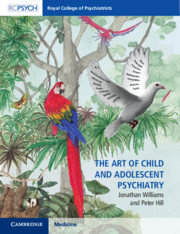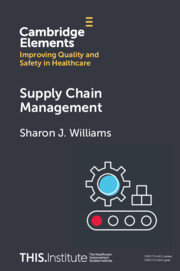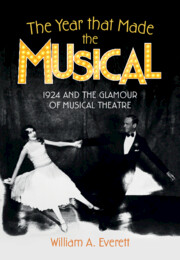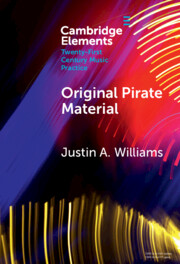71412 results
Verification, Validation, and Uncertainty Quantification in Scientific Computing
- Coming soon
-
- Expected online publication date:
- December 2024
- Print publication:
- 01 November 2025
-
- Book
- Export citation
Local Peace, International Builders
- How UN Peacekeeping Builds Peace from the Bottom Up
- Coming soon
-
- Expected online publication date:
- December 2024
- Print publication:
- 31 December 2024
-
- Book
- Export citation
Interpreting R. G. Collingwood
- Critical Essays
- Coming soon
-
- Expected online publication date:
- November 2024
- Print publication:
- 30 November 2024
-
- Book
- Export citation

The Art of Child and Adolescent Psychiatry
- Coming soon
-
- Expected online publication date:
- August 2024
- Print publication:
- 30 June 2024
-
-
Part of:
- Children's Mental Health Collection
-
- Book
- Export citation
Channel Codes
- Classical and Modern
- Coming soon
-
- Expected online publication date:
- August 2024
- Print publication:
- 31 August 2024
-
- Textbook
- Export citation

The Sacred Force of Star Wars Jedi
- Coming soon
-
- Expected online publication date:
- August 2024
- Print publication:
- 31 August 2024
-
- Element
- Export citation
Error bounds for one-dimensional constrained Langevin approximations for nearly density-dependent Markov chains
- Part of
-
- Journal:
- Advances in Applied Probability , First View
- Published online by Cambridge University Press:
- 26 July 2024, pp. 1-43
-
- Article
- Export citation

Supply Chain Management
- Coming soon
-
- Expected online publication date:
- July 2024
- Print publication:
- 31 August 2024
-
- Element
- Export citation

The Year that Made the Musical
- 1924 and the Glamour of Musical Theatre
- Coming soon
-
- Expected online publication date:
- July 2024
- Print publication:
- 11 July 2024
-
- Book
- Export citation

Original Pirate Material
- The Streets and Hip-hop Transatlantic Exchange
- Coming soon
-
- Expected online publication date:
- July 2024
- Print publication:
- 31 July 2024
-
- Element
- Export citation
A qualitative study of patients’ perceptions of DASH diet apps for dietary self- management of hypertension in Saudi Arabia
-
- Journal:
- Proceedings of the Nutrition Society / Volume 83 / Issue OCE2 / June 2024
- Published online by Cambridge University Press:
- 03 July 2024, E224
-
- Article
-
- You have access
- Export citation
Source Clay Minerals Project
-
- Journal:
- Clays and Clay Minerals / Volume 21 / Issue 1 / February 1973
- Published online by Cambridge University Press:
- 01 July 2024, pp. 71-73
-
- Article
-
- You have access
- Export citation
Oxidative Power of Smectites Measured by Hydroquinone
-
- Journal:
- Clays and Clay Minerals / Volume 21 / Issue 5 / October 1973
- Published online by Cambridge University Press:
- 01 July 2024, pp. 337-350
-
- Article
- Export citation
Analcime Deposits in the Wichita Mountains, Southwestern Oklahoma
-
- Journal:
- Clays and Clay Minerals / Volume 15 / February 1967
- Published online by Cambridge University Press:
- 01 July 2024, p. 191
-
- Article
- Export citation
Origin of the Woodstown, New Jersey, Macro-Kaolinite
-
- Journal:
- Clays and Clay Minerals / Volume 16 / Issue 3 / August 1968
- Published online by Cambridge University Press:
- 01 July 2024, pp. 257-264
-
- Article
- Export citation
Determination of Surface Area by Surfactant Adsorption in Aqueous Suspension — I. Dodecylamine Hydrochloride
-
- Journal:
- Clays and Clay Minerals / Volume 17 / Issue 2 / July 1969
- Published online by Cambridge University Press:
- 01 July 2024, pp. 47-57
-
- Article
- Export citation
A Comparative Study of Thermal Effects on Surface and Structural Parameters of Natural Californian and Quebec Chrysotile Asbestos up to 700°C
-
- Journal:
- Clays and Clay Minerals / Volume 25 / Issue 2 / April 1977
- Published online by Cambridge University Press:
- 01 July 2024, pp. 78-89
-
- Article
- Export citation
1,10-Phenanthroline Complexes of Fe(II) and Cu(II) Adsorbed Onto Hectorite Surfaces
-
- Journal:
- Clays and Clay Minerals / Volume 26 / Issue 2 / April 1978
- Published online by Cambridge University Press:
- 01 July 2024, pp. 178-179
-
- Article
- Export citation



